When Koen Padding died in 2012, the violin making community was not just bereft at losing a loyal friend but also thrown into confusion about whether his varnish making knowledge, on which many relied, was gone with him. As a collection of his writings is republished, we take a look at an interview with him from 2005
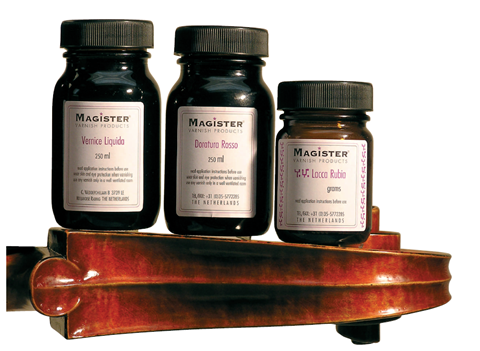
Dutch violin maker Koen Padding, whose passion for classical varnish was known to many luthiers through the products he sold under the Magister brand name, died at the age of 53 in 2012. This interview by Roger Hargrave was first published in the March 2005 issue of The Strad, and is also one of the introductory texts in ‘Violin Varnish: notes and articles from the workshop of Koen Padding’, edited by Helen Michetschlager, which is available to order now from the The Strad Shop
Koen Padding was destined to make violin varnish. His family has been making high-quality inks for the printing industry since the 1830s, using a variety of varnishes and pigments. For Koen and his brothers, books were for rubbing together and smelling – exactly what they saw their father doing when he compared printing inks for rub resistance, colour and odour. The varnishing system that Padding champions is exactly that, a system.
His products are used by many professional makers throughout the world. Some use it exactly as specified, while others take what they require, customising the product to their own specifications. This is probably the greatest strength of his Magister varnish products and over the last decade they have become one of the best selling varnish methods of all time.
After high school Padding left The Netherlands to study violin making at the Newark School in the UK. He arrived as I was beginning my second year and, in spite of the fact that I was almost ten years his senior, I took to him immediately; perhaps because his red hair reminded me of my father and younger brother. He quickly became fanatical about violin making.
For a time Padding retained his youthful disdain of the past, believing – as many of us did – that with our superior intellect and technology we could not only emulate but improve on the works of the great classical masters. He was convinced that the ancient riddle of classical varnish would quickly be solved, but he soon learned the magnitude of those two words, ‘classical varnish’.
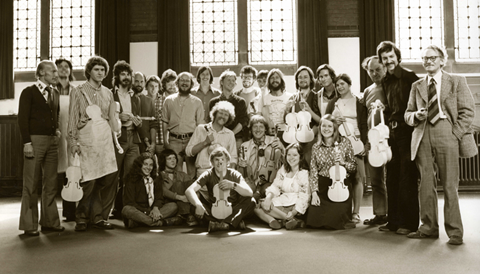
On leaving the violin school, Padding spent eight years restoring classical Italian instruments for several of Europe’s leading shops. I met him again when he joined my team of maker–restorers in Bremen in the 1980s. His youthful self-assurance had mellowed, but he was still fascinated by the question of classical varnish; in fact, he was already making a passable varnish when he returned to The Netherlands to concentrate on making new instruments. However, as he points out himself, he was making these varnishes with little real knowledge of the history and properties of classical Italian varnish.
Padding had also joined his father in the printing ink laboratory, on a part-time basis. Here he discovered that offset-printing inks were much the same as oil varnishes, though technically more complex. The Padding company had a wonderful collection of books and manuscripts on the subject and, as he learnt more about the theoretical side of coatings and varnish formulas, he began researching and experimenting with violin varnishes and colours in a serious way. He soon realised that not only was he producing a large surplus of varnish but his interest was rapidly becoming a timeconsuming and costly obsession.

About twelve years ago, to help fund further research, Padding began selling some of his surplus varnish. As demand increased, his hobby developed into a successful enterprise, allowing him to devote far more time to his research and refining his products.
With all this work behind him, you might expect the conversation to get technical very quickly, but Padding starts out emphasising a simple point. ‘When you look at a varnished violin,’ he says, ‘what you perceive is not simply created by the varnish itself. You see the first few layers of the wood structure, any possible ground or sealer, and all the various films that may have been subsequently applied. All of these possible layers I call the “coating”. The varnish itself may only be a part of this coating. Consequently, unless you have a fair idea about how the rest of the coating is built up, it is difficult to draw conclusions about the actual varnish.
‘A coating is a system of layers and this system influences both the appearance and performance of an instrument. Once you begin to think of the violin’s outward appearance in this way, then it becomes apparent that the similarities that make us classify all the different “varnishes” from Amati to Guadagnini as “classical varnish” have more to do with the first few layers of these coatings than with the actual varnish itself.’
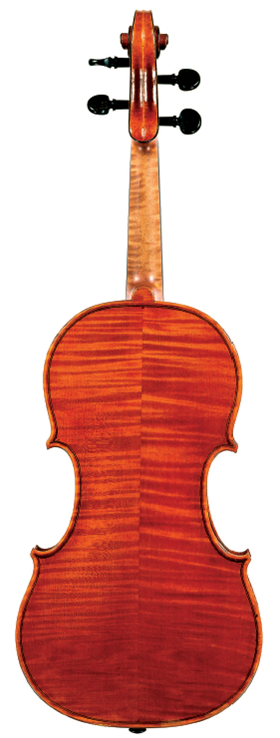
Padding believes that the classical finishing system was based on a method used by the Byzantines which he refers to as the Byzantine Finishing System. ‘The Byzantines were producing and exporting icons, painted in tempera, on an almost industrial scale,’ he explains. ‘By the early Middle Ages the methods and materials employed by these craftsmen had spread throughout Europe. Even the later development of full oil painting was still based on this Byzantine system. Most tempera and oil paintings were done on wooden panels, but all kinds of objects were decorated following these principles. In fact, when finishing an object, this long tradition made it a logical, possibly even an unquestioned or unconscious choice for any woodworker. And this system was already in use many centuries before the classical period of violin making began.
Perhaps because of its great age this system was not controlled by some pan-European regulation – it was more like a code of good practice and, as such, there were many variations of the method.’
Padding has spent a lot of time examining classical instruments, looking for faults in the varnish film and trying to work out if they were caused by the composition, the application or the ageing process. He has scoured the historical source material not only about varnish but also about the contemporary arts and crafts trade. His goal was to develop a broad insight into the possibilities of the period. He then attempted to link his observations on varnish to historical practices and scientific data.
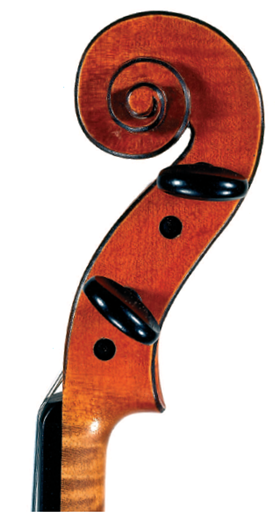
For the many researchers who have helped to pave his way, Padding has nothing but gratitude. In particular he cites those specialists who have spent hours translating ancient texts or explaining complex chemical reactions. He sees himself as someone who gratefully borrows anything which can help him create a fine classical coating.
But he’s selling himself a little short – anyone who is involved with advancing knowledge must use the work of others. He has used the information he has uncovered and processed to steer his own practical experiments in varnish making and application, spending many hundreds of hours in the laboratory testing different oil and resin combinations and their reaction to different cooking procedures. He points out that varnish making is like any other craft: you can only learn so much in theory. Alot of it is a hands-on learning process. ‘You have to smell, even taste, your materials and experience how they behave under different conditions,’ he says. ‘Just as a violin maker needs to understand his wood or a blacksmith get the feel of a particular batch of iron in order to get the best results from their work.’
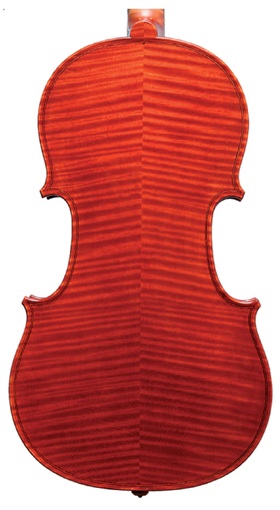
Many of the procedures that Padding has tried have gone unused for centuries and whatever information exists is often scanty or misleading. There are also many seemingly unimportant details that can alter the results of a particular batch – cooking vessels of different materials or filtering through genuine linen, for example. All of these things must simply be tried and tested.
Asked about the availability of historical recipes, Padding laughs and says that violin makers always ask about recipes. However he considers the value of ancient oil varnish recipes to be overrated. In his opinion most historical recipes are little more than approximate lists of ingredients usually picked up second hand by the author and virtually all lack a comprehensive description of the method, the most important factor in oil varnish making. ‘Following a historical oil varnish recipe will not necessarily result in a fine historical varnish,’ he says. ‘Oil varnishes are very different from solution varnishes like spirit or essential-oil varnishes. Drying oils are mixtures of very complex molecules.
These may break up or bond under the influence of the cooking process or the presence of other ingredients. The quality of the ingredients is also critical and together these details are at least as important as the recipe. This is why so much variation is possible from the same recipe. It is rather like telling ten people the ingredients for a loaf of bread. If you neglect to tell them the type of flour and yeast, the amounts, how the mixture should be prepared, or what it should taste or even look like, you will end up with ten very different loaves. Some may not even be edible.
‘Even the best formulated varnish recipe will seldom achieve the same result in different hands. Oil varnish recipes are like violin outlines – if you don’t have some concept about what you want to make, the nicest outline and the best recipe will not create a successful instrument. Furthermore, even when you have made a successful varnish it is important to keep an open mind about improvements.
‘A simple example of the importance of concept is the fact that many historical varnishes were not formulated to be brushed on. The most common practice was to apply them by hand or with a sponge. This works particularly well when applying strongly pigmented varnishes on relatively large surfaces, but only if the varnish is of the right kind.’
What does Padding look for in a good modern varnish? He says the entire coating of a violin should look as if it is only going to get nicer as it gets older. He fervently dislikes instruments that look grubby or dirty as the first signs of wear appear. And, as far as the varnish proper is concerned, Padding is looking for good transparency and colour followed by a warm feel to the touch and a slightly fatty, rich look. It should also be flexible and resist ageing without hardness.
He tests the flexibility by drying varnish on a piece of cellophane and rolling it round a matchstick; ideally no cracks should appear. Padding believes the question of whether classical makers made their own varnish is not really important, but by and large the evidence is against it. The great similarity between the varnishes on instruments from the same period and locality suggests a communal source. Moreover, he points out that the cooking of oil varnish is not without its risks. It is highly combustible, even explosive, especially when prepared on an open flame, and in many towns it would have been forbidden to cook varnishes inside the city walls. In fact, written alongside some ancient recipes is the advice to buy the best available varnish from a supplier. In most cases this would have been the local apothecary. The early kinds of oil varnish that we now attempt to emulate were available from most apothecaries in northern Italy around 1650, Padding explains. These varnishes and their ingredients were used in many ways, ranging from repairing pottery to medicinal applications. He suggests that they would have been seen as basic ingredients to be changed by the user to match their specific needs.
Is Padding trying to replicate a specific type of varnish, such as that of Stradivari? Surprisingly, this is not his immediate goal. ‘First of all you need to take into account the overall build-up of the coating,’ he explains, ‘including the sequence and method of applying the various layers.
In the case of old varnishes, time plays a crucial and irreproducible role in their present appearance. Varnish films change in structure and density with age and in turn this alters the way in which we experience their colour and their transparency. If Stradivari could apply his own varnish on an instrument today it would not resemble those instruments of his that are now more three centuries old.’
Agood violin coating is a lot more than the contents of the bottle, says Padding. On the other hand, he argues that, providing the initial stages are completed correctly and a suitable varnish is carefully applied, it is possible to end up with something that looks as a newly varnished classical varnish would have done. ‘There will be a familiarity about it,’ he says, ‘if not the similarity that perhaps a copyist would be trying to reproduce.
Perhaps the kind that exists between a picture of yourself in kindergarten and one taken only yesterday. But above all it should be your own classical varnish and just as much your own as that of any classical violin maker.’ That, for him, is the alluring aim.






















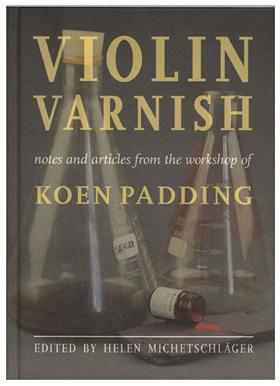












No comments yet